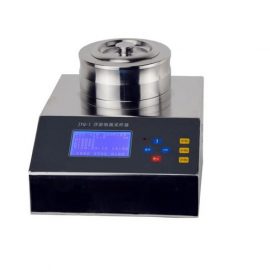
# Microbial Air Sampler: A Comprehensive Review of Applications and Advancements
## Introduction
Microbial air samplers have become indispensable tools in various fields, from healthcare to environmental monitoring. These devices are designed to collect and quantify airborne microorganisms, providing critical data for assessing air quality and potential health risks. This article delves into the applications and recent advancements in microbial air sampling technology.
## Applications of Microbial Air Samplers
### Healthcare Facilities
In hospitals and clinics, microbial air samplers are used to monitor the presence of pathogens that could lead to hospital-acquired infections. Regular air sampling helps in identifying contamination sources and implementing effective sterilization protocols.
### Pharmaceutical Industry
The pharmaceutical industry relies on microbial air samplers to ensure that production environments are free from contaminants. This is crucial for maintaining the sterility of products, especially in the manufacturing of injectable drugs and vaccines.
### Environmental Monitoring
Environmental scientists use microbial air samplers to study the dispersion of microorganisms in the atmosphere. This data is vital for understanding the impact of air quality on ecosystems and human health.
### Food Industry
In the food industry, microbial air samplers help in maintaining hygiene standards by detecting airborne pathogens that could contaminate food products. This is particularly important in facilities producing ready-to-eat foods.
## Advancements in Microbial Air Sampling Technology
### Improved Sensitivity and Accuracy
Recent advancements have led to the development of microbial air samplers with enhanced sensitivity and accuracy. These devices can detect lower concentrations of microorganisms, providing more reliable data for decision-making.
### Portability and Ease of Use
Modern microbial air samplers are designed to be portable and user-friendly. This allows for on-site sampling in various environments, making it easier to conduct real-time monitoring and rapid response to contamination events.
### Integration with Digital Technologies
The integration of microbial air samplers with digital technologies has revolutionized data collection and analysis. Wireless connectivity and cloud-based platforms enable real-time data sharing and remote monitoring, enhancing the efficiency of air quality management.
### Automation and Smart Features
Automation in microbial air samplers has reduced the need for manual intervention, minimizing the risk of human error. Smart features such as programmable sampling schedules and automatic data logging have further streamlined the sampling process.
## Conclusion
Microbial air samplers play a crucial role in ensuring air quality and safety across various industries. With continuous advancements in technology, these devices are becoming more efficient, accurate, and user-friendly. As the demand for clean air grows, the importance of microbial air samplers in monitoring and controlling airborne contaminants will only continue to increase.
Keyword: Microbial Air Sampler
